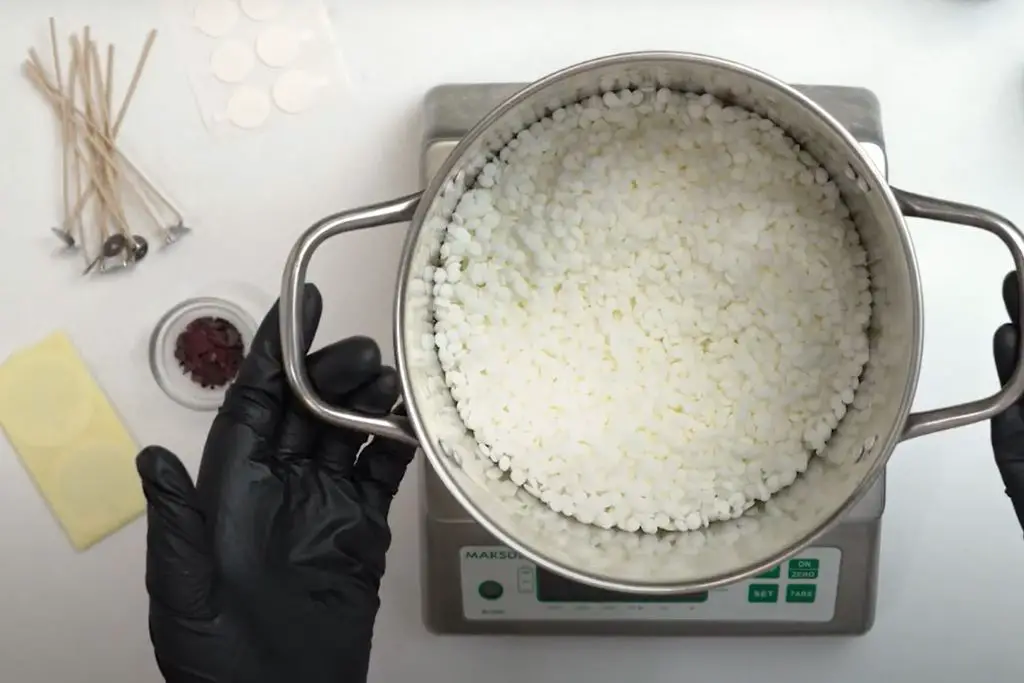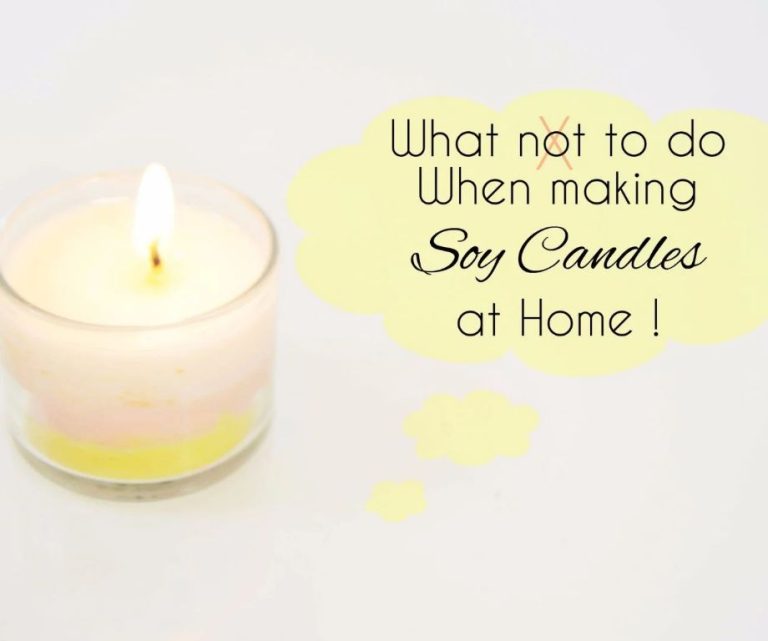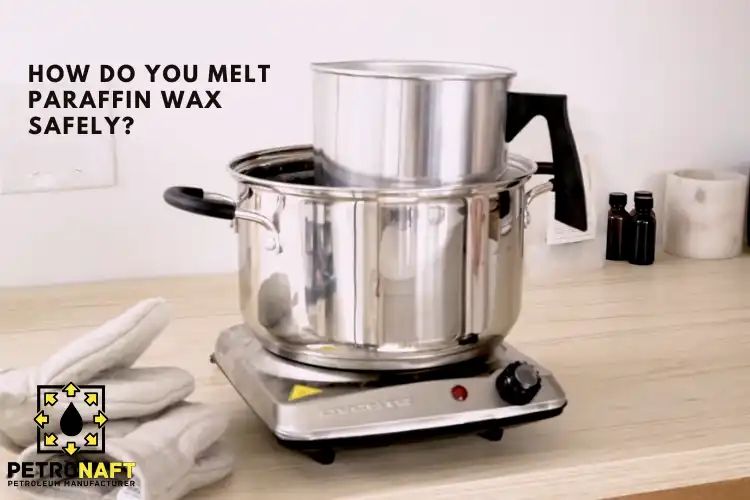Can You Melt A Candle With Hot Water?
The concept of melting a candle with hot water is an interesting scientific phenomenon. It demonstrates the principles of melting points and how heat transfers between substances. The key question we will examine is: Can you melt a candle simply by heating water and placing the candle in it?
This experiment allows us to observe how wax, with a low melting point, reacts when it comes into contact with hot water. We will learn if the heat from the water is sufficient to melt through the wax of a candle.
By conducting this simple experiment, we will gain insight into melting points, heat transfer, and the interactions between solids and liquids. The results will reveal whether a candle can be melted using this household materials.
Candle Composition
Candles are typically made from paraffin wax, a byproduct of petroleum refining. Paraffin wax is a soft, colorless wax derived from crude oil. It has a low melting point, making it ideal for candle making. According to the National Candle Association, paraffin wax makes up about 90% of candles today. Other common candle waxes include beeswax, soy wax, and microcrystalline wax (1).
Beeswax is a natural wax made by honey bees. It has a pleasant, sweet aroma and produces a brighter flame compared to paraffin. Soy wax is made from hydrogenated soybean oil. It’s renewable and biodegradable. Microcrystalline wax comes from the residue leftover from refining crude oil. It is harder and more opaque than paraffin (2).
While paraffin wax is the most common, candle makers may use a blend of waxes to achieve desired qualities like scent throw, burning time, texture, and appearance. But in general, the primary component of most candles is paraffin wax (1).
(1) https://candles.org/elements-of-a-candle/wax/
(2) https://en.wikipedia.org/wiki/Candle
Melting Points
The melting point of paraffin wax is a key factor in determining if it can be melted by hot water. Paraffin wax is composed of long-chain alkanes and has a melting point between approximately 115-160°F (46-71°C), with most commercial waxes melting around 135°F (57°C). In comparison, the boiling point of water is 212°F (100°C) at standard atmospheric pressure.
Since the boiling point of water is higher than the melting point of paraffin wax, hot water above 135°F can be used to melt paraffin wax. However, the wax may melt slowly depending on the temperature differential. Using water at temperatures significantly above the wax melting point, such as near the boiling point, will melt the wax much faster and more effectively.
Conducting the Experiment
To melt a candle with hot water, you’ll need the following materials:
- Candle
- Heat proof bowl or plate (glass or metal work best)
- Water
- Stove or hot plate
Here are the steps to conduct the experiment:
- Place the candle in the center of the bowl or plate.
- Boil water on the stove or hot plate.
- Carefully pour the hot water into the bowl/plate until it surrounds the candle.
- Observe as the candle begins melting due to the hot water.
- Once melted, remove the bowl/plate from the heat source.
- Let the water cool before discarding.
The key is to heat up water to a high temperature, near boiling point, in order for it to generate enough heat to melt the candle wax when poured into the bowl/plate surrounding the candle. The melted wax will mix into the water as it melts off the candle.
Factors that Impact Melting
There are several key variables that determine how quickly and easily a candle can be melted using hot water. According to research, the melting point of wax is greatly influenced by its chemical composition, purity and processing methods (https://blendedwaxes.com/blog/wax-melting-point-factors/).

The temperature of the water is perhaps the most significant factor. The hotter the water, the faster it will transfer heat to melt the candle wax. However, exceeding the wax’s melting point by too much can cause splattering when the wax rapidly expands in the hot water (https://www.quora.com/Why-does-melted-candle-wax-catch-fire-when-in-contact-with-water).
The size and shape of the candle also impacts the melting rate. A larger candle has more total wax and surface area, so will take longer to fully melt than a smaller tealight or votive candle. Candles with a greater exposed surface area relative to their volume will melt quicker.
Stirring helps accelerate melting since it ensures the hot water maintains full contact with the candle as it melts down. Letting the candle remain stationary could create an insulating layer of solid wax protecting the rest of the candle.
The purity and additives in the wax affect its melting point. Beeswax, soy wax, and paraffin wax all have slightly different melting points. So the composition of the candle should be considered when selecting water temperature and timing.
Safety Precautions
When melting a candle with hot water, there are some important safety precautions to take:
Hot wax can cause severe burns if it splatters on exposed skin, so wear protective gear like gloves, long sleeves, closed toe shoes, and safety goggles (see source). Always have a fire extinguisher nearby in case the wax ignites. Supervise children at all times.
Never leave melting wax unattended – stay nearby to monitor the process (see source). Turn off the stove if you have to step away. Make sure there is water between the wax container and boiling pan to prevent scorching.
Allow melted wax to fully cool and harden before handling. Do not pour down drains as it can clog pipes. Clean up spills right away to prevent slips. Extinguish candles fully before disposal.
Take precautions, work slowly and carefully, and never rush the melting process. With supervision and proper gear, melting candles with hot water can be done safely.
The Science Behind It
The science behind melting a candle with hot water relies on heat transfer. As the water is heated, its molecules gain kinetic energy and begin to vibrate and move faster. When the hot water comes into contact with the candle wax, heat energy is transferred from the faster moving water molecules to the slower wax molecules.
This added energy causes the kinetic energy of the wax molecules to increase, breaking the intermolecular attractions and allowing the molecules to move freely. As more heat energy is added, the temperature of the wax increases until it reaches its melting point. At that point, the orderly arrangement of molecules in the solid wax breaks down completely as the wax transitions from a solid to a liquid state. According to the Candle Science website, paraffin wax, a common candle wax, has a melting point between 117-160°F (https://candles.org/candle-science/).
The key to melting the candle is ensuring the water is heated above the wax’s melting point. As the hot water transfers its thermal energy to the wax, it causes the wax to absorb enough heat to undergo the phase change into liquid form. This allows the once solid wax to drip or destabilize from the heat. The greater the temperature difference between the hot water and wax, the quicker the wax will melt.
Other Methods to Melt
While using hot water is one way to melt a candle, there are several other common methods as well. Some popular alternatives include:
Using a double boiler or makeshift double boiler by placing a heatproof bowl over a pot of simmering water is a common technique. The indirect heat gently melts the wax without scorching it (Source). This gives more control than direct heat.
Melting wax in the microwave is quick but can be risky. Wax can overheat and catch fire if microwaved too long. Shorter intervals with careful monitoring work best (Source).
Compared to hot water, the double boiler and microwave allow melting the full candle more easily. With hot water, you may just melt off the outer layer unless the candle is small or water is extremely hot. So hot water can melt candles, but other methods may work faster and more efficiently.
Fun Examples
A fun art project that takes advantage of melting crayons with hot water is creating melted crayon art. This involves peeling the paper wrappings off crayons, breaking them into pieces, and placing them into molds such as ice cube trays or silicone candy molds. Fill the molds with broken crayon pieces in whatever colors and designs you’d like. Then carefully pour hot – but not boiling – water over the crayons until they have fully melted and fill the mold. Let cool completely, then pop out your colorful melted crayon creations! The crayons reuse waste crayons in a creative way and make fun shaped crayons, refrigerator magnets, ornaments, and more.1
This kid-friendly project allows you to recycle old, broken crayons that would normally be tossed out. The hot water provides just enough gentle heat to melt the crayon wax without scorching or burning it. Allowing children to peel, break, and arrange the crayons builds fine motor skills. And they’ll have fun seeing their crayon designs transform into bright, colorful art or crafts. Melted crayon art makes great DIY gifts too!
Conclusion
In conclusion, it is possible to melt a candle with hot water, but there are some important factors to consider. The water needs to be hot enough to reach the melting point of the wax, which is between 120-165°F depending on the type of wax. Paraffin wax, the most common candle wax, melts around 130-140°F. Therefore, the water should be heated on the stove to at least 140°F to sufficiently melt the candle wax.
The melting process can take some time and patience as the hot water slowly transfers heat to melt the wax. Proper safety precautions like using tongs, gloves, and eye protection are critical when handling hot wax to avoid burns. While adding water to melted wax can create interesting effects in candles, it should be done carefully to prevent splattering. Overall, with the right temperature water and safety measures, you can successfully melt old candle wax for reuse by using this hot water method.
The key lessons are that it is possible but you need sufficiently hot water, time for the wax to melt, and proper safety gear. With some simple preparation and care, hot water can be an effective way to melt candles for recycling old wax.




